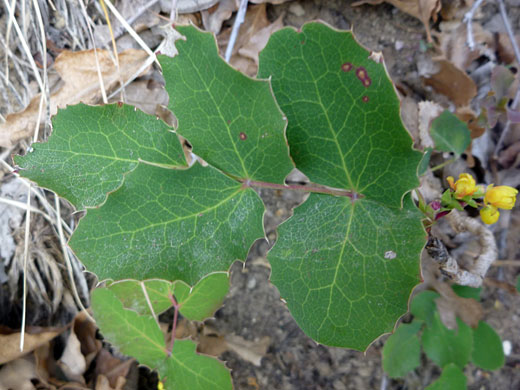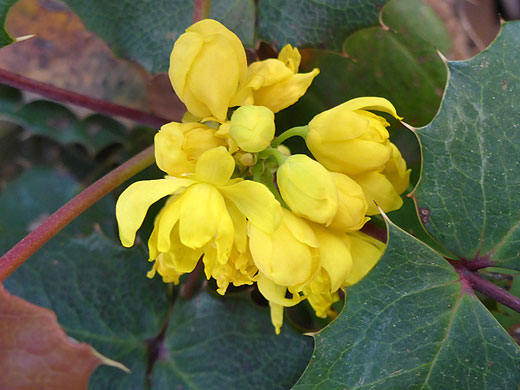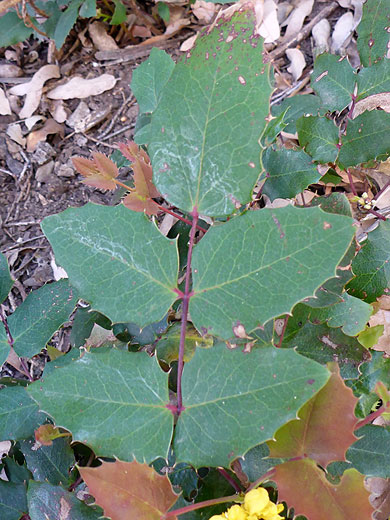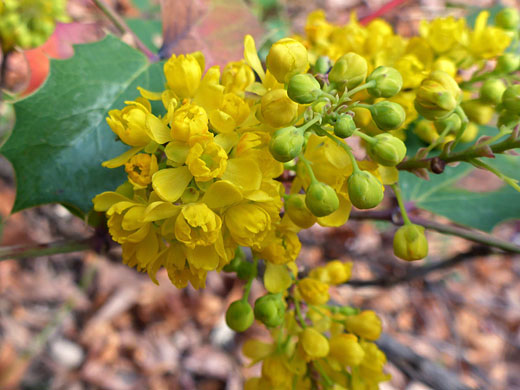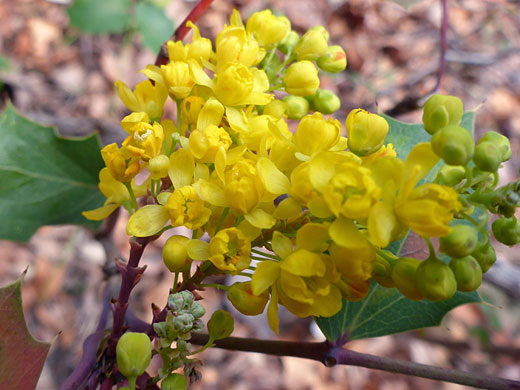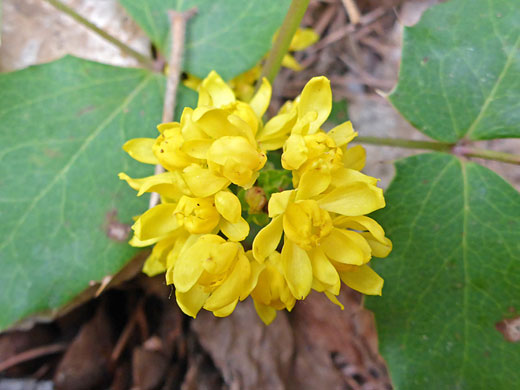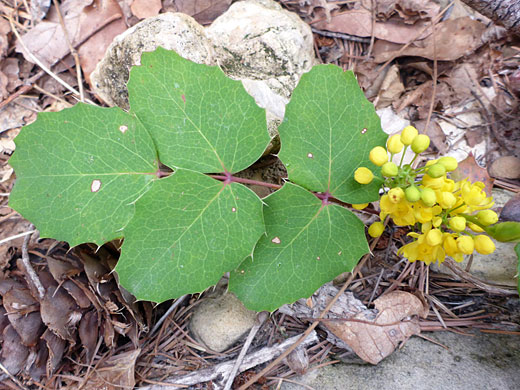
Cluster of small yellow flowers - mahonia repens along the Grandview Trail, Grand Canyon National Park, Arizona
Common name:
Creeping barberry
Family:
Scientific name:
Mahonia repens
Synonym:
Berberis repens
Main flower color:
Range:
Most of the western states; less common in the far south
Height:
Up to 10 inches
Habitat:
Woodland, chaparral, grassland; 1,000 to 7,000 feet
Leaves:
Pinnately divided into 5 or 7 (occasionally 3) broad, ovate to elliptic leaflets, with toothed and shallowly lobed margins
Season:
April to June
Mahonia repens is a small shrub just a few inches tall, found in a range of habitats - from relatively overgrown areas in conjunction with other bushes and trees, to open, rocky slopes, at low to medium elevations. The holly-like leaves are compound, divided into 5 or 7 leaflets which have rounded tips, a flattish base, and very shallow lobes around the edge, each centered on a short spine. Leaflets are bright green on top, duller underneath, becoming red as they age, especially in the fall. Leaves have stalks of up to 3.5 inches. Stalks and stems are reddish in color.
The inflorescence is a dense cluster of up to 50 small yellow flowers attached by short green pedicels. Flowers are formed of six sepals and six petals, all similar in appearance, except that the outer sepals may have thin red stripes on the outside. Berries are blue, with a glaucous surface, and edible.
The inflorescence is a dense cluster of up to 50 small yellow flowers attached by short green pedicels. Flowers are formed of six sepals and six petals, all similar in appearance, except that the outer sepals may have thin red stripes on the outside. Berries are blue, with a glaucous surface, and edible.
All Contents © Copyright The American Southwest | Comments and Questions | Contribute | Site Map

